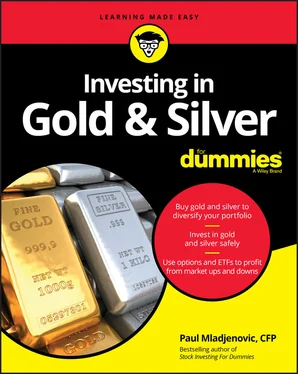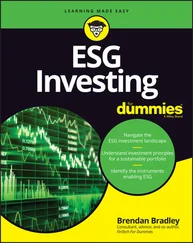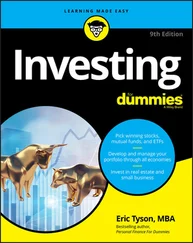In terms of who has done the buying, China and India are the primary drivers of consumer demand.
The second area of demand is from central banks that buy gold as a store of value and to diversify their asset and currency reserves. This category of demand hit an all-time high of 667.7 tons.
What I find interesting about central banks is that they have a love/hate relationship with gold. On the one hand, they hate (perhaps dislike is a better word) gold because it’s a competitor to the currency they issue. When the public buys gold, it’s an admission that the currency isn’t attractive in terms of holding its value.
But many central bankers do realize that ultimately gold wins over currencies … sooner or later. In this case, the smart(er) central bankers prefer to have gold in their corner to boost their currency. Maybe not always officially but indirectly. If gold can make the central bank of that country strong(er), that in turn boosts confidence in that particular currency. The great tendency has been historically that the East (principally China, India, and other countries) have been, on balance, greater buyers of gold than their Western counterparts. Given the history and endurance of gold, central banks in the West, especially Western Europe and the U.S. central bank, the Federal Reserve, will see the wisdom and become net buyers, too.
ETF and investment demand
The third area of demand (1,273.4 tons) is investment demand, ranging from buying from gold-backed exchange-traded funds (ETFs; see Chapter 8) and from coins and bars sold (see Chapters 9and 10). This area rose significantly in late 2019 due to gold’s price increase. Total buying rose to 401 tons, which nearly offset the decline in jewelry sales.
The reason cited for why ETFs and other investment sources increased their gold holdings was low/negative interest rates, and geopolitical uncertainty fueled this growth, while the gold price rally also attracted momentum-driven inflows. By the end of 2019, gold-backed ETFs were holding a record amount of physical gold at 2,885.5 tons.
Lastly (and making up the remaining quantity of sales) is global technology sales because gold is increasingly used for circuitry and electronics tied to the technology industry. In 2019, this area of gold demand hit 326 tons.
In 2019, the WGC reports that the gold supply went up 2 percent to a total of 4,776 tons. The primary source was from mining, which was at 3,463.7 tons — marginally lower than 2018 but the first annual decline in ten years. Extracting gold from the ground is getting more difficult, and that is a positive sign for investors and speculators. Why? Because a decline in gold supply will put pressure on the price of gold to go up if gold demand continues to be stable or increasing.
The remaining supply came from recycling. In 2019, recycling sharply increased by 11 percent as the public took advantage of gold’s rise and sold their gold holdings such as jewelry and other consumer items with gold content. Because 2020 was a good year for gold’s price rise, I suspect that recycling will be strong because gold’s price rise occurred in an economic backdrop that was dreadful as thousands of businesses closed and unemployment hit record highs due to the pandemic and subsequent government lockdown procedures across the globe.
Going Over Gold’s Recent Bull and Bear Markets
In the modern age, gold has gone through periods of popularity when its price has risen (bull markets) and when it was unloved and its price was flatlining or going down (as with bear markets). Each of these bull and bear markets essentially coincided with how the rest of the world was doing, and this bore an inverse relationship.
 As you find out in the following sections, when the world was generally doing well, and there was minimal conflict and financial instability, there was little demand for gold as an investment alternative or hedge. The opposite was generally true. When the world was experiencing difficulties, especially with economics and financial matters (usually coupled with geopolitical conflict), then gold was popular and its rising price reflected that.
As you find out in the following sections, when the world was generally doing well, and there was minimal conflict and financial instability, there was little demand for gold as an investment alternative or hedge. The opposite was generally true. When the world was experiencing difficulties, especially with economics and financial matters (usually coupled with geopolitical conflict), then gold was popular and its rising price reflected that.
 With commodities and precious metals, demand and supply are key fundamental drivers of the asset’s price, so stay tuned with that data. For gold and silver, I provide those resources throughout this book and in Appendix A.
With commodities and precious metals, demand and supply are key fundamental drivers of the asset’s price, so stay tuned with that data. For gold and silver, I provide those resources throughout this book and in Appendix A.
During the second half of the 1970s, gold soared as the world was struggling with financial crises and geopolitical conflicts. Inflation in the United States, for example, was hitting double-digit levels and trying to come out of the recession of 1974–1976 with its companion stock bear market (the Dow Jones Industrial Average had fallen more than 40 percent in that bear market). So investors fled to a reliable safe haven: gold.
Gold was under $200 in the middle of the decade, and it peaked at $850 on January 21, 1980. But new policies brought on by a new president marked the end of this gold bull market.
After Ronald Reagan won the presidency in 1980 in a landslide, he retained as Federal Reserve chairman Paul Volker, who held (fortunately) an austere guidance with the money supply and allowed interest rates to be at a high and painful level (as high as 21 percent at one point), and this austere approach broke the inflationary spiral. The country experienced a recession in 1981, but it was worth it. Coupled with historic tax cuts, the economy rebounded, and the stock market had a strong decade.
The public’s appetite for safe-haven assets declined, which in turn sent gold into an extended bear market. Nimble investors rebalanced their portfolios. They decreased (or removed entirely) their gold-related stocks and assets and switched to assets that would excel with a stronger economy such as stocks.
The 1990s range-bound market
During 1990–1999, gold essentially traded sideways and ended the decade on a bearish note. It started the decade at a hair under $400 per ounce and ended the decade at about $290 per ounce. Although gold had some rallies and corrections along the way and still offered profitable opportunities for both investors and speculators, the 1990s were generally a lackluster time for gold.
Despite this unspectacular activity, the mining industry did well. It successfuly found strong gold deposits in its exploratory activities, and the majors were profitable as they increased the quantity and sales of gold despite the lower market price.
The bull and bear markets of 2000–2008
Now we fast-forward to the 21st century. Stocks started the millennium at unsustainable highs. You may recall the “internet bubble” and the “tech stock bubble.” These deflated on their own, but the next whammy was the terrorist events on September 11, 2001, which sent the markets reeling downward. The public’s appetite for safety returned, and a gold bull market during 2000–2008 saw gold’s price go from $288 (January 2000) to breach the $1,000 level in March 2008 for a gain of 247 percent. It trended lower for 2008 in a modest and relatively brief bear market that lasted mere months (versus years in prior bear markets).
Читать дальше

 As you find out in the following sections, when the world was generally doing well, and there was minimal conflict and financial instability, there was little demand for gold as an investment alternative or hedge. The opposite was generally true. When the world was experiencing difficulties, especially with economics and financial matters (usually coupled with geopolitical conflict), then gold was popular and its rising price reflected that.
As you find out in the following sections, when the world was generally doing well, and there was minimal conflict and financial instability, there was little demand for gold as an investment alternative or hedge. The opposite was generally true. When the world was experiencing difficulties, especially with economics and financial matters (usually coupled with geopolitical conflict), then gold was popular and its rising price reflected that. With commodities and precious metals, demand and supply are key fundamental drivers of the asset’s price, so stay tuned with that data. For gold and silver, I provide those resources throughout this book and in Appendix A.
With commodities and precious metals, demand and supply are key fundamental drivers of the asset’s price, so stay tuned with that data. For gold and silver, I provide those resources throughout this book and in Appendix A.










